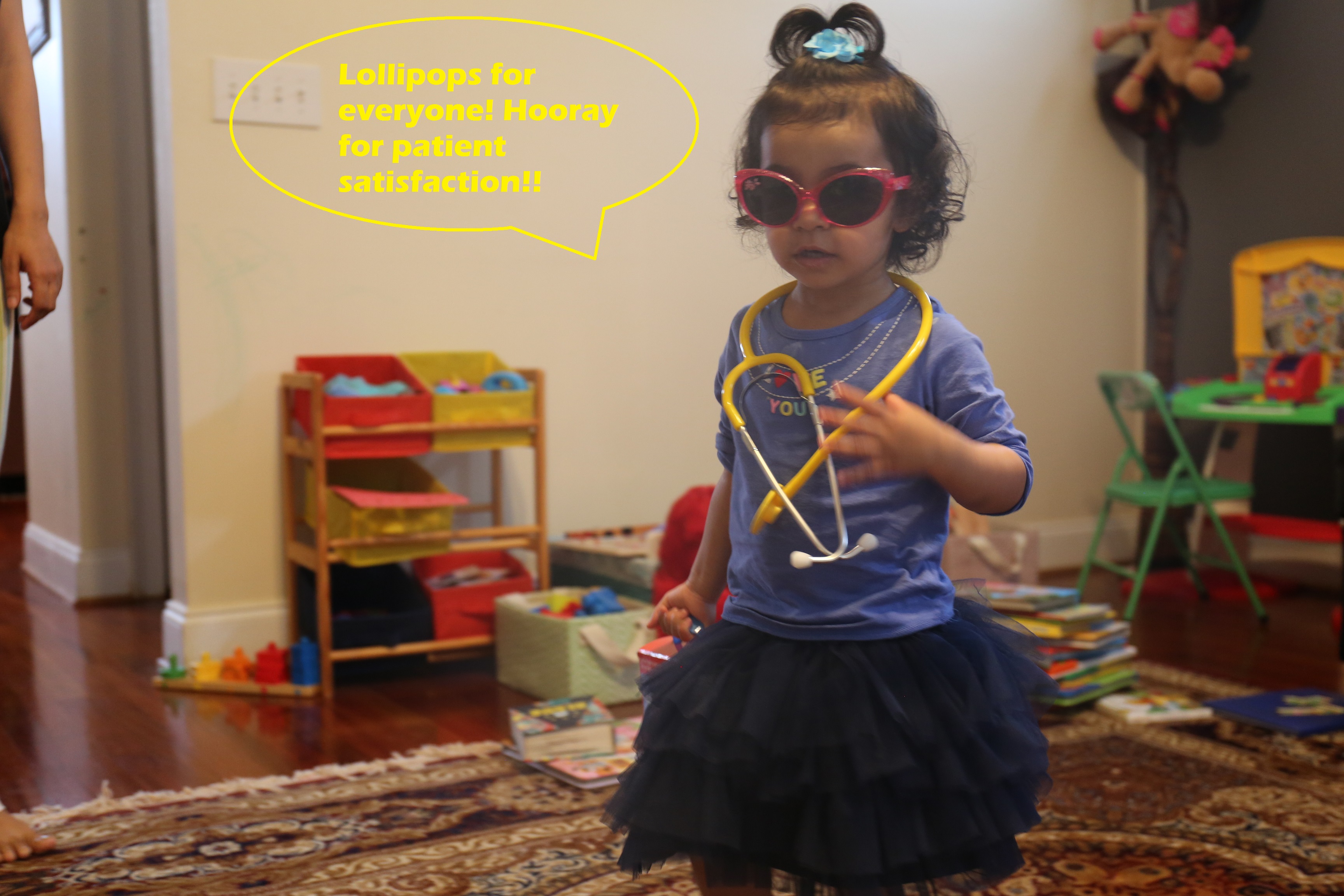Patient satisfaction is all the rage in Emergency Departments. Long gone are the days of emphasizing cost-effective care, replaced by the need to greet patients immediately, cater your care to the patient’s wishes, and order a shotgun approach of labs and imaging studies to capture anything and everything. Rather than doing what is best for the patient, we are at times forced to do what will make them the happiest. This might mean unnecessary antibiotics, overuse of narcotics, or inappropriate CT scans (just to name a few).
In the last 12 months, providers at one of my hospitals were asked to adhere to a dress code of only black scrubs. This way, leadership opined, we could clearly be identified by patients (rather than be mistaken for nurses or lab techs). Patients would thus feel more at ease with their visit and confident that a licensed provider had seen them.
When that [miraculously] didn’t make a dent on low satisfaction scores, we were each given dry erase markers with our names on them. ‘Use the white boards’ became the refrain we heard day in and day out. We were asked to write our name on the rooms in front of all patients, to list out which studies would be performed, and to use our crystal ball to write down how long patients would have to spend waiting. The markers were lost by the end of our first shift and use of white boards soon fell to the wayside.
The next idea was probably the worst: put simply, there is no good reason for an emergency department provider to have business cards. It’s nice for handing out to consultants when they give you their card, and kinda cool to have when you’re trying to impress a member of the opposite sex, but we should not be handing them out to patients. Our director took it one step further and printed out pamphlets with his credentials, a brief bio, and even a family picture to hand out to everyone he saw in an attempt to improve the provider-patient relationship. I can’t really say if it worked, but he was fired a few months later.
At one job, while being interviewed for a leadership position, I was asked about my thoughts on that particular hospital’s patient population:
“Do you think we have a narcotic problem in our community of patients?”
“How important do you feel it is to manage a person’s pain?”
I knew the answers that I had to give to secure the position; once again it came down to patient satisfaction. Reading between the lines, what I was being told was, “give our patients what they ask for and keep them happy, and everyone wins”.
No one is going to make 100% of their patients happy. If you do, you’re doing something wrong about 25% of the time. Patients sometimes do not know what is in their best interest and are not informed enough to know the best way to diagnose and treat their condition. A December 2017 study published in Annals found that patients who received more imaging studies (specifically CT and MRI studies) reported higher satisfaction scores. Want to make patients happy? Perhaps the secret is to irradiate them.
The key to patient satisfaction is this: treat others the way you would want to be treated. Speak to others the way you would want to be spoken to. Keep them informed, answer their questions, and close the loop. Smile. In the right setting, try to make them laugh. Relate to them. Reassure them. These types of things shouldn’t need to be taught because they should be inherent. But we’re busy, stretched thin, and always have another patient to see.





